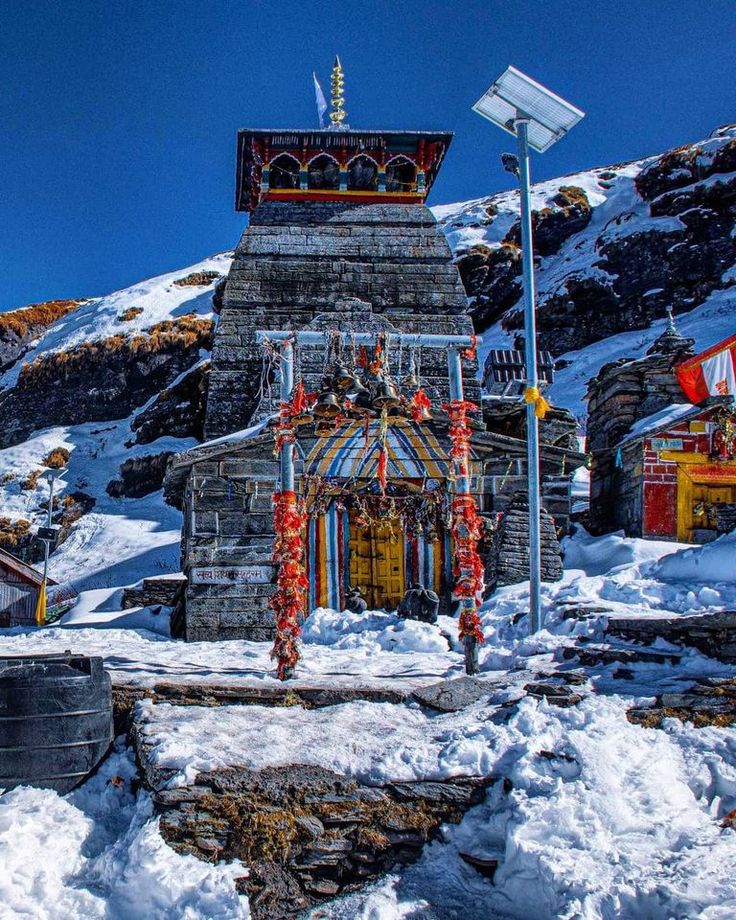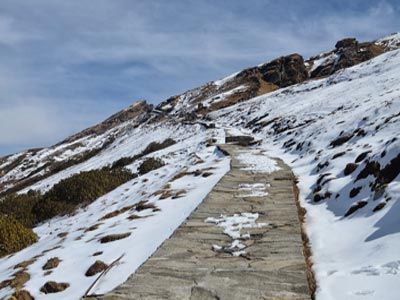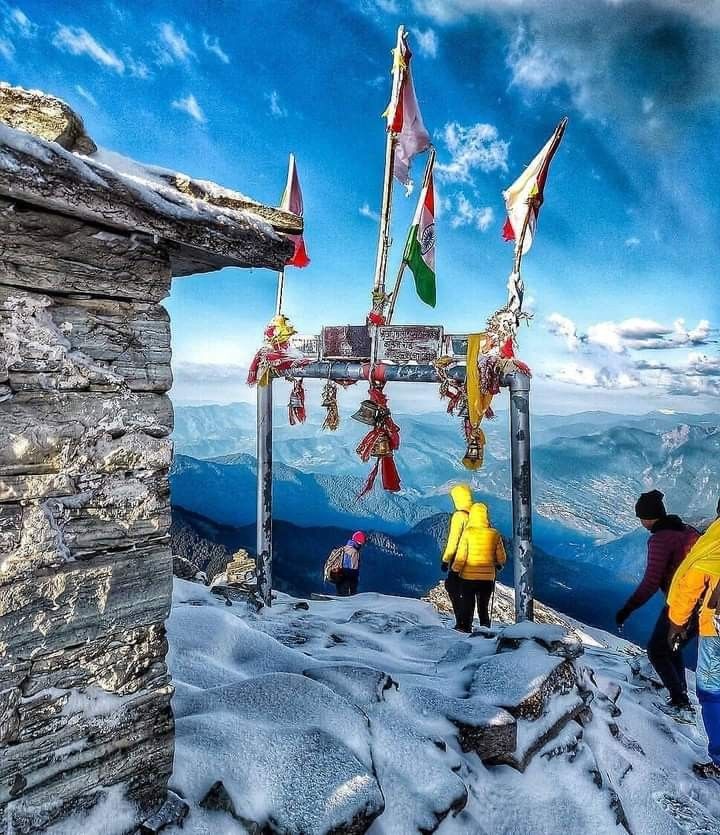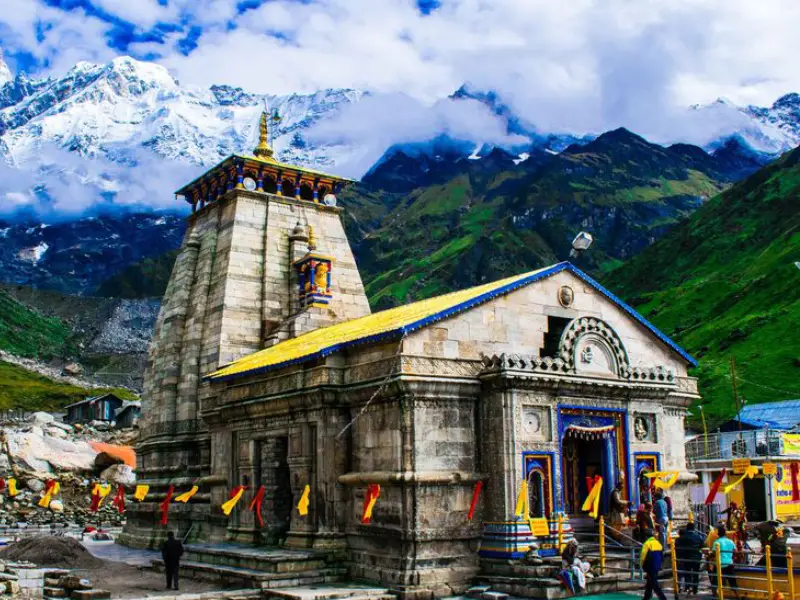Tungnath, nestled in the lap of the majestic Himalayas, is not just a temple but a spiritual sojourn for millions. Located in the Rudraprayag district of Uttarakhand, India, Tungnath is the highest Shiva temple in the world, perched at an altitude of approximately 3,680 meters (12,073 feet). Part of the Panch Kedar, it is a significant pilgrimage site for devotees of Lord Shiva and attracts trekkers and nature enthusiasts alike. In this blog, we will explore the rich history, spiritual significance, and natural beauty of Tungnath, and provide practical tips for travelers.

History and Mythology
The origins of Tungnath are steeped in Hindu mythology, specifically linked to the Mahabharata. According to legend, after the Kurukshetra war, the Pandavas sought penance for the sins of killing their kin. Lord Shiva, unwilling to forgive them so easily, disguised himself as a bull (Nandi) and roamed the Garhwal region. When the Pandavas pursued him, he dived into the ground, and his body parts appeared in different locations. These locations became the Panch Kedar, with Tungnath being the site where his arms were discovered.
The temple’s history dates back more than 1,000 years, and its architecture reflects the traditional North Indian style. Despite its remote location, the temple has withstood the ravages of time and remains a significant center of Shaivism.
Spiritual Significance
Tungnath is revered as a sacred spot where the divine energies of Lord Shiva are said to resonate. Pilgrims often undertake this journey to seek blessings, spiritual enlightenment, and a connection with nature. The temple’s priesthood is unique, as the rituals are performed by Brahmins from South India, a tradition established by the Adi Shankaracharya.
The sanctity of the place is amplified during the summer months when the temple opens for worship. The atmosphere is charged with hymns, the fragrance of incense, and the serene sound of temple bells, creating an unforgettable spiritual experience.
The Trek to Tungnath

Starting Point: Chopta
The trek to Tungnath begins at Chopta, a picturesque hamlet often referred to as the “Mini Switzerland of India.” Located at an altitude of 2,680 meters, Chopta is surrounded by dense forests of pine, deodar, and rhododendron, making it a haven for nature lovers.
Trail Details
The trek to Tungnath is relatively short, approximately 3.5 kilometers, but the steep ascent makes it moderately challenging. The trail is well-marked and offers stunning views of the Himalayan peaks, including Nanda Devi, Chaukhamba, and Trishul. Along the way, trekkers can spot vibrant flora, including rare alpine flowers, and fauna such as Himalayan monals, musk deer, and langurs.
Chandrashila Summit

Many trekkers extend their journey to Chandrashila, a summit located 1.5 kilometers above Tungnath. At an altitude of 4,000 meters, Chandrashila offers panoramic views of the Himalayas and is also associated with legends of Lord Rama meditating here after defeating Ravana. The sunrise from Chandrashila is a sight to behold, often described as a spiritual awakening.
Best Time to Visit
The best time to visit Tungnath is during the summer months, from April to June, and the post-monsoon period, from September to November. During these times, the weather is pleasant, and the trekking trail is accessible. In winter, heavy snowfall covers the region, and the temple remains closed. However, adventurous souls can still trek to the snow-covered shrine, though it requires expert guidance and preparation.
Accommodation and Facilities
Lodging Options
Accommodation options near Tungnath include basic guesthouses and campsites in Chopta. These are run by locals and offer a cozy stay with essential amenities. For those seeking a more immersive experience, camping under the starlit Himalayan sky is a popular choice.
Food and Supplies
Simple vegetarian meals are available at dhabas along the trekking route and in Chopta. It’s advisable to carry some snacks and water for the trek. Since Tungnath is a sacred site, alcohol and non-vegetarian food are strictly prohibited in the area.
Environmental Significance
Tungnath is part of the Kedarnath Wildlife Sanctuary, a biodiverse region home to numerous endangered species. The area’s pristine environment underscores the importance of responsible tourism. Visitors are encouraged to follow eco-friendly practices, such as avoiding plastic, respecting local customs, and leaving no trace.
Practical Tips for Travelers
- Physical Preparation: The trek involves a steep climb, so it’s important to be in good physical condition. Regular cardio exercises and practice hikes can help.
- Clothing and Gear: Layered clothing is recommended due to fluctuating temperatures. Comfortable trekking shoes, a raincoat, and a walking stick are essential.
- Altitude Sickness: Although the altitude is not extreme, some travelers may experience mild symptoms. Staying hydrated and acclimatizing at Chopta can help.
- Local Guides: Hiring a local guide enhances the trekking experience and ensures safety, especially if you plan to trek to Chandrashila.
FAQs
Q1: How do I reach Tungnath?
A: The nearest airport is Jolly Grant Airport in Dehradun, about 220 kilometers away. The nearest railway station is Rishikesh, approximately 200 kilometers from Chopta. From there, one can hire a taxi or take a bus to Chopta.
Q2: Is the Tungnath trek suitable for beginners?
A: Yes, the trek is suitable for beginners with a reasonable level of fitness. The short distance and well-maintained trail make it manageable, although the steep ascent can be challenging for some.
Q3: Are there any entry fees for Tungnath or Chandrashila?
A: There is no entry fee for visiting Tungnath temple. However, a nominal fee may be charged for entering the Kedarnath Wildlife Sanctuary.
Q4: Can I visit Tungnath during winter?
A: The temple is closed during winter due to heavy snowfall. However, the trek to the snow-covered temple is possible with proper gear and guidance.
Q5: What other places can I visit near Tungnath?
A: Nearby attractions include Deoria Tal, a beautiful high-altitude lake, and the other Panch Kedar temples such as Kedarnath and Rudranath.
Q6: Is photography allowed at Tungnath?
A: Yes, photography is allowed. However, visitors are advised to respect the sanctity of the temple premises and avoid using flash inside the temple.
Q7: Are there medical facilities near Tungnath?
A: Basic medical facilities are available in Chopta. For serious medical emergencies, one would need to travel to Rudraprayag or a larger city.
Conclusion
Tungnath is more than a destination; it’s an experience that combines spirituality, adventure, and natural beauty. Whether you are a devotee seeking divine blessings, a trekker yearning for Himalayan vistas, or a nature lover eager to explore biodiversity, Tungnath has something to offer everyone. As you ascend the sacred trail, you’re not just climbing a mountain—you’re embarking on a journey of inner discovery. Embrace the tranquility, breathe in the crisp mountain air, and let Tungnath leave an indelible mark on your soul.




